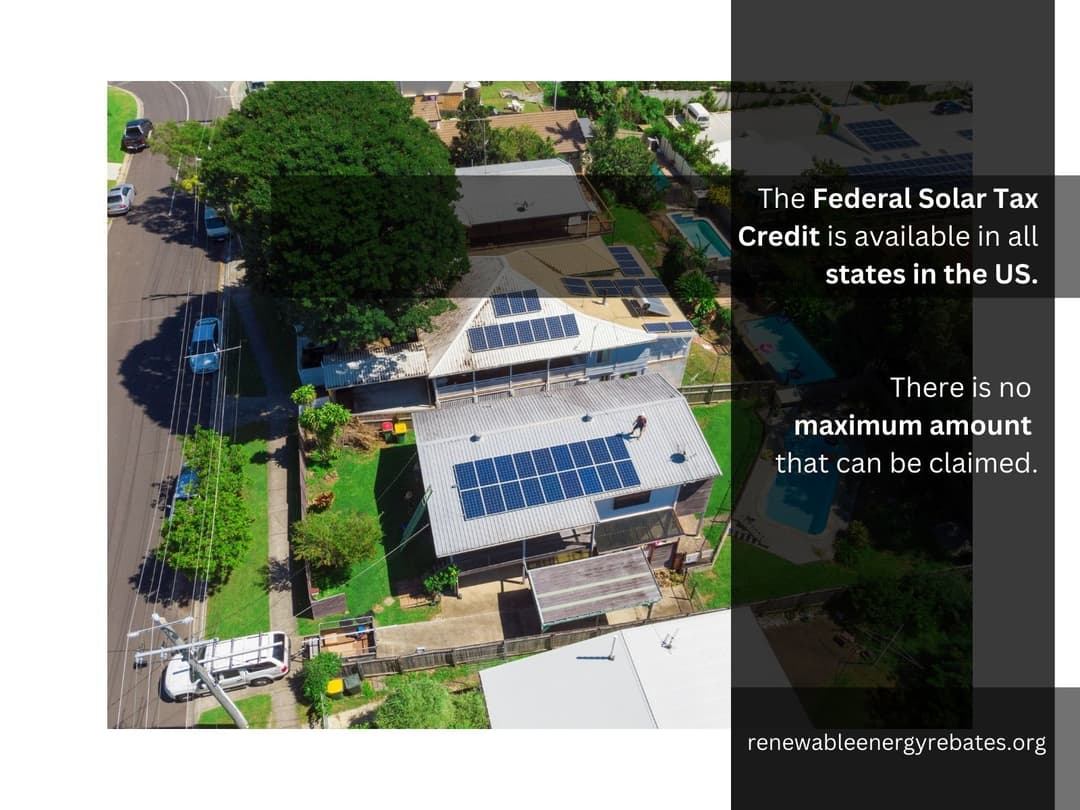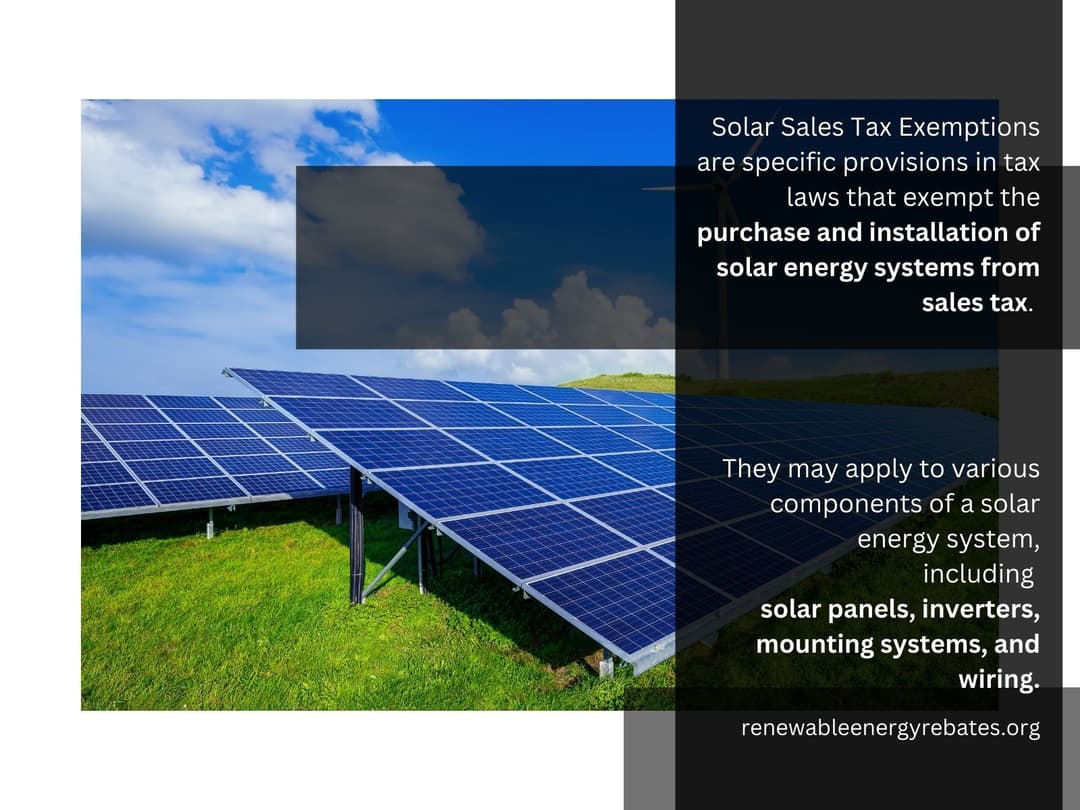Federal Solar Tax Credit in California
Learn about the Solar Tax Credit in California
Key Details
- The Federal Solar Tax Credit was launched in 2005 following the passage of the Energy Policy Act.
- Homeowners who install solar panels are eligible for a 30% federal tax credit on their income tax liability.
- To qualify, homeowners must install solar energy systems in a primary or secondary residence (with legal title held by the homeowner).
- To claim the tax credit, applicants must submit IRS Form 5695 and their regular 1040 Form and list their credits on Schedule 3.
What is the Solar Tax Credit?
The Federal Solar Tax Credit, or the Investment Tax Credit (ITC), is a federal incentive program that provides a tax credit to homeowners and businesses for installing solar energy systems.
The Investment Tax Credit is available to all California residents.
Created in 2005 as part of the Energy Policy Act, the credit was scheduled to decrease to 22% in 2023 and be terminated in 2024. However, in 2022, the federal government revised the program with the Inflation Reduction Act, expanding the inclusion dates, and increasing the credit percentage.

As of 2023, the rates for credit are as follows:
- 30% for systems deployed from 2022-2032.
- 26% for systems deployed in 2033.
- 22% for systems deployed in 2034.
- In 2035, the program will be terminated and unavailable.
An average 6kW solar system costs $16,380 in California. Claiming the California tax credit helps offset the cost of the system to $11,466.
What Impact Does it Offer to Homeowners in California?
Even though the California solar energy rebate does not provide any cashback for homeowners installing solar panels, it can reduce the installation cost considerably.
For instance, if the expense of installing a solar panel system on your rooftop comes to $30,000, you can save $9,000 if you qualify for the 30% ITC.
Note: The use of solar energy in the United States has increased by more than 10,000% since the launch of the ITC program. It has created more employment and more significant investments in the American economy.
What's the rate schedule?
As of 2023, the federal credit tax rate is fixed at 30%. The passage of the Inflation Reduction Act increased this rate from 26% to 30% in 2022. The following are the modifications to the rates:
- 30% discount on all installations until 2032
- In 2033, the proportion would reduce to 26% for solar system installations.
- It will decrease to 22% by 2034 for solar systems installed at that time.
- After 2035, the credit for deployed systems will no longer be available.
Eligibility
What are the rules for eligibility?
You must satisfy the following criteria to qualify for the California solar panel tax credit:
- Your solar photovoltaic system must have been installed and put into service between January 1, 2022, and December 31, 2032, to qualify for the 30% federal tax credit.
- Either your main or secondary residence must have had a solar energy system installed in order to qualify.
- Solar thermal systems and solar photovoltaic (PV) power systems are two examples of solar components. The Federal Solar Tax Credit can be used for both solar water heaters and solar photovoltaic (PV) systems.
- Whether you paid cash or financed your solar PV system, you must have a legal title to it. You will not qualify for this program if you enter into a solar contract or power purchase agreement (PPA).
- The federal solar investment tax credit is only available for the "initial installation" (first time) of solar PV systems.

Which Solar Energy Systems Qualify for the Federal Tax Credit?
In 2023, homeowners who have installed solar panel systems can receive tax credits equal to 30% of the following:
- The cost of solar panels.
- Hardware costs for solar energy systems, including inverters, cabling, and mounting hardware
- Installation costs, such as those for permits and inspections for solar panels.
- Retail taxes on the expenses of solar installations.
How do I Claim the Federal Solar Tax Credit in California?
Step 1: Determine Your Eligibility
If you own your solar energy system rather than leasing it, you are qualified for the Federal ITC. But if you sign a rental agreement, the solar tax credit connected with the system is transferred to the third-party owner.
Step 2: What forms are required to claim the ITC?
You will need the following tax forms and instructions to claim your tax credit:
Step 3: Instructions for completing IRS Form 5695
Standard IRS 1040 Form, IRS Form 5695, "Residential Energy Credits," and Form 5695 instructions are required to get started. You can confirm your eligibility for renewable energy certificates by using Form 5695.
Step 4: Compute the expenses of your energy-efficient properties
- You must first be familiar with the qualified solar electric property expenses. After any cash rebates, this is the final gross cost of your solar energy setup. To line 1, include that.
- Lines 2 through 5 should then be used to enter the total cost of any extra energy improvements, if any, and line 6a should be used to add them all up.
- Add 30% to line 6b after dividing line 6a. This is the total amount of your tax credit.
Step 5: Determine your tax liability
You must have sections 1 through 18 of your standard 1040 Form finished before you can proceed.
- Use the directions from Form 5695.
- Use a worksheet to determine the maximum amount of tax benefits you can claim on page 4.
- Line 1 of this worksheet should now have the figure on line 18 of your 1040 Form.
- You'll need that information in line 2 if you're claiming tax credits for things like adoption costs, mortgage interest, or purchasing a plug-in hybrid or electric car.
- The credit maximum for residential energy-efficient properties is then calculated by deducting the number on line 2 from line 1.
Step 6: Figure out your tax credit
- Lastly, you must enter the worksheet's outcome from line 3 on line 14 of Form 5695.
- Lines 13 and 14 should be reviewed, and line 15 should contain the smaller of the two numbers.
- If your tax liability is less than the sum of your tax credits, take the difference between lines 15 and 13 and put it on line 16.
- You can deduct that sum from your taxes for the following year.
Step 7: Instructions for adding values to Schedule 3 and Form 1040 for 2022
- The value of the renewable energy credit for this year is indicated on line 15.
- The amount must be added to Schedule 3 and eventually to IRS Form 1040, your regular tax form.
